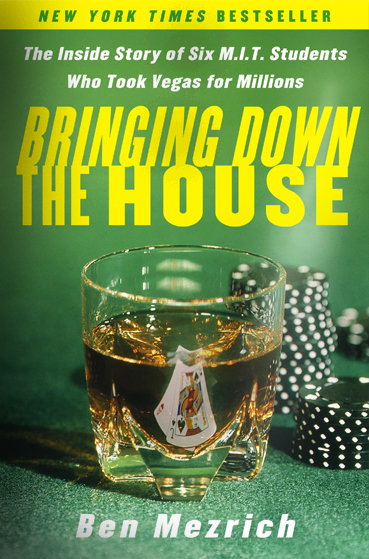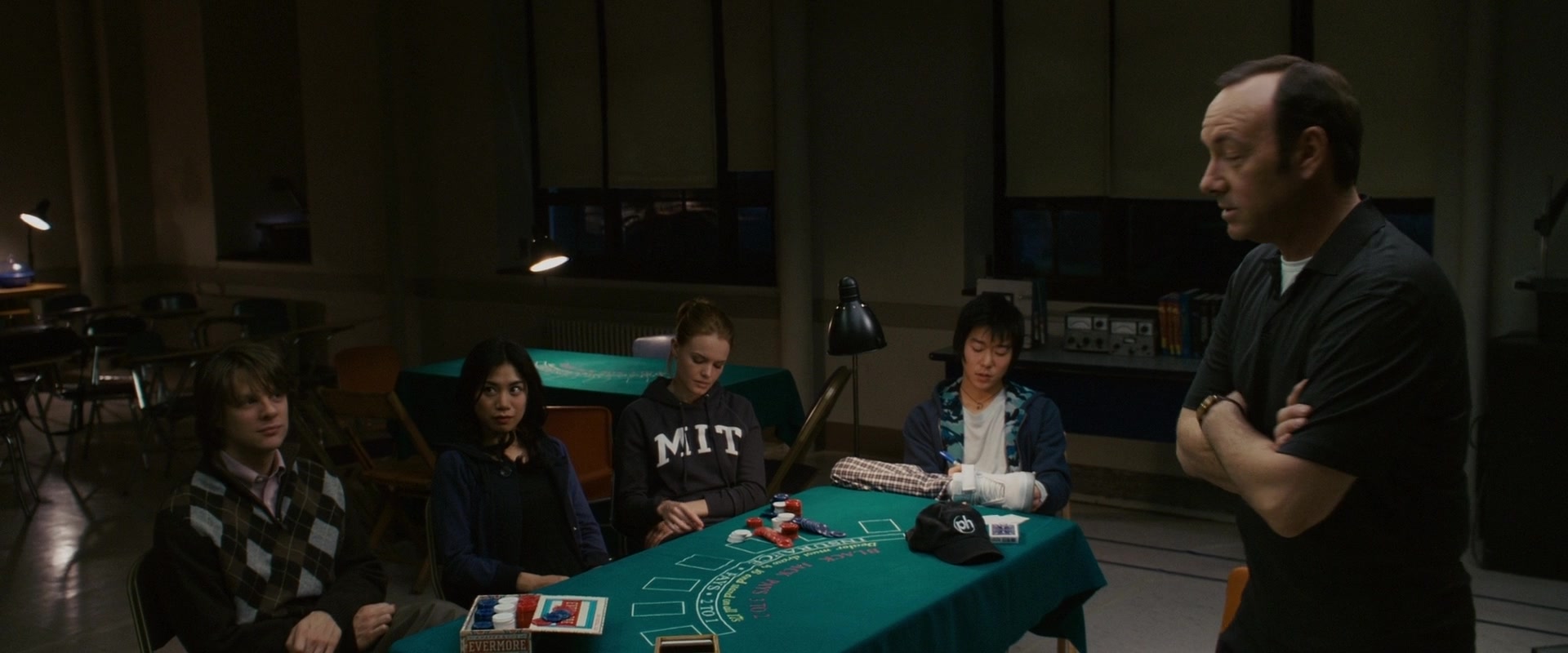Mit Vegas
The transformations of the Strip—from the fake Wild West to neon signs twenty stories high to “starchitecture”—and how they mirror America itself.
- Join Mr Vegas Casino – Start your journey with a 100% Bonus! Welcome to Mr Vegas Casino, the place to be for the best online entertainment and casino games. Mr Vegas offers you the opportunity to enjoy the best possible casino experience by introducing a portfolio of handpicked games including live casino, slots, video slots, video poker and of course the table game classics such as.
- Hacking Las Vegas. THE INSIDE STORY OF THE MIT BLACKJACK TEAM'S CONQUEST OF THE CASINOS. To revist this article, visit My Profile, then View saved stories. To revist this article, visit.
- Teacher Account Joined 2 years ago United States. What I'm working on. What I've been doing. Classes (10) View all. 2nd - 3rd, 2019-2020 4th 2020-2021 4th, 2019-2020 4th, 2019-2020 1st. 2019-'20 5th, 2019-2020 5th 2019-2020 2nd, 2019-2020.
The Las Vegas Strip has impersonated the Wild West, with saloon doors and wagon wheels; it has decked itself out in midcentury modern sleekness. It has illuminated itself with twenty-story-high neon signs, then junked them. After that came Disney-like theme parks featuring castles and pirates, followed by replicas of Venetian canals, New York skyscrapers, and the Eiffel Tower. (It might be noted that forty-two million people visited Las Vegas in 2015—ten million more than visited the real Paris.) More recently, the Strip decided to get classy, with casinos designed by famous architects and zillion-dollar collections of art. Las Vegas became the “implosion capital of the world” as developers, driven by competition, got rid of the old to make way for the new—offering a non-metaphorical definition of “creative destruction.” In The Strip, Stefan Al examines the many transformations of the Las Vegas Strip, arguing that they mirror transformations in America itself. The Strip is not, as popularly supposed, a display of architectural freaks but representative of architectural trends and a record of social, cultural, and economic change.
The Massachusetts Institute of Technology’s Community Innovator’s Lab Green Economic Development Initiative (MIT GEDI), and the City of Las Vegas’ Office of Sustainability, partnered in January 2013 on an “action research” project to develop an Energy Efficiency Market Transformation Strategy for commercial building in Las Vegas. The MIT Blackjack Team was started in 1980 by a Harvard Business School graduate, Bill Kaplan, who had run a successful Vegas-based team for the prior three years. Kaplan met a few MIT undergrads (including JP Massar), who had been trying to win at the game with little success for months.
Al tells two parallel stories. He describes the feverish competition of Las Vegas developers to build the snazziest, most tourist-grabbing casinos and resorts—with a cast of characters including the mobster Bugsy Siegel, the eccentric billionaire Howard Hughes, and the would-be political kingmaker Sheldon Adelson. And he views the Strip in a larger social context, showing that it has not only reflected trends but also magnified them and sometimes even initiated them. Generously illustrated with stunning color images throughout, The Strip traces the many metamorphoses of a city that offers a vivid projection of the American dream.
In gambling lore, few stories outdo the Massachusetts Institute of Technology (MIT) students who “outsmarted” casinos throughout the world. The whiz kids counted cards and took the casinos for millions of dollars in the process during a thirty-year stretch.
The story has been retold in books, Bringing The House Down, and most famously, the Hollywood movie 21 (which was “loosely” based on the book). Loosely is the most apt word because there’s serious inconsistencies with the real-life events and the Hollywood “fantasy.”
While we love the movie as much as the next person — what’s not to like about a plot that makes Las Vegas casinos the bad guys — but we don’t want to give Hollywood a complete pass either. That’s why we’ve zeroed in on the biggest differences between the two. And believe us, the real-life story is interesting enough that it doesn’t need to be fabricated.

“21(Movie)” by Colombia Pictures is licensed under CC BY 3.0
Not As Easy As 1-2-3
In the flick, the MIT students are seemingly unbeatable. Win after win is racked up montage-style, including a $640,000 night in the finale. However, anyone that’s played blackjack before knows sometimes luck just isn’t on your side — whether you’re card counting or not.
John Chang, who played with the team before becoming its manager in real life, has been quick to point out the movie’s inaccuracies. He’s been harsh about the never-lose depiction of the team, saying “it just wasn’t that easy. We didn’t win every time. In fact, we endured months of losing from time to time.”
See? Even count-carders are prone to cold streaks. And for those wondering, Chang was the inspiration behind one of the movie’s main characters, Micky, played by Kevin Spacey.
Motivations Were Made Up
If you know anything about Hollywood script writers, you know they care deeply about what motivates their main characters. They can’t do something just for the sake of it, there needs to be a deeper, underlying reason — preferably one the general audience can connect with.

That explains why the movie’s leading character, Ben, was over-humanized. In the film, he joins the MIT Blackjack team primarily to fund himself through Harvard Medical School. The character who Ben is based on, Jeff Ma, came from a well-off family in reality.

Another motivating factor in the movie for Ben was a love interest. He’s persuaded to join the team by the Kate Bosweorth-acted Jill character. Once again, Jeff says no such thing happened during his tenure on the team.
“21(Movie) cast” by Colombia Pictures is licensed under CC BY 3.0
“Whitewashed” Cast
In case you haven’t figured it out by now from the real-life names, the majority of the MIT Blackjack Team was actually Asian-American, not caucasians like their movie counterparts. This re-cast is the classic Hollywood trick notoriously dubbed “whitewashing.” Apparently, film producers believe the audience can relate to white American actors better than those of foreign descent.

It should be noted 21 was released in 2008 when it was easier to get away with whitewashing. In today’s politically-charged environment, such a decision would surely be met with rampant criticism online.
Far From A Shadowy Operation
In the movie, the card-counting squad act under a veil of secrecy. Players keep their participation in the club very hush-hush, shielding away family and friends from knowing. The team also is bankrolled by its team manager.
Mit Vegas Scam
In actuality, the team was run like a well-oiled machine. In 1992, a limited partnership entity was officially formed called Strategic Investments. The legal entity received money from venture capitalists, which it in turn used to recruit players and finance blackjack playing. The company was disbanded only a year later, but succeeding MIT players formed another company, this time called Amphibian Investments.
Mit Students Beat Vegas Movie
All Work, No Play
/GettyImages-6149725761-5c9137c4c9e77c00010e976c.jpg)
Mit Vegas Card Counting
Strippers, parties, guilty-pleasure gambling — that’s all depicted in the movie as a post-blackjack celebration from the MIT students. But once again, things couldn’t be further from the truth.
Mit Vegas Card Counters
When out on trips, the real-life MIT team was all business, according to Cheng. He’s quoted as saying, “our time was too valuable, and our focus too intense to bother. You’d be considered such a losing sucker if you did any of that.” We have to remember, the players were mostly geeky MIT students — not exactly the crowd you’d find inside a Las Vegas strip club. Nice try, Hollywood!